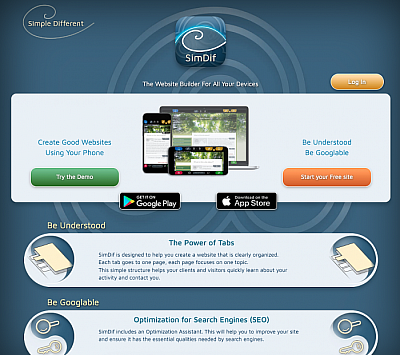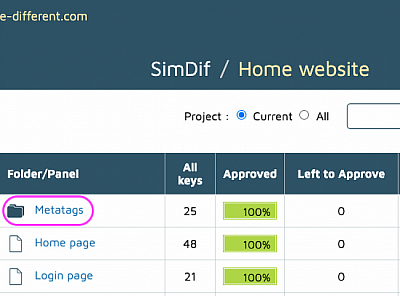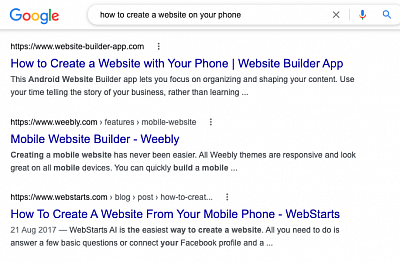Search Engine Optimization (SEO)
Translating The Simple Different Company's Websites
Search Engine Optimization is an important practice to follow when translating websites such as www.simple-different.com, www.simdif.com and www.yorname.com
Websites need translations which reflect the relevant topics that people are Googling. Especially for elements of websites such as the Titles and the Metadata. It sometimes means that the most direct translation of an English text is not the best one, if it results in language that no-one will ever type into Google.
Text which appears in Google
In the image above you can clearly see the "on-page" titles of Simple Different's homepage. They're in bigger text, and usually the most important titles are nearer the top of the page. But there are other titles and bits of text which are not visible on the website, but are visible in Search Engine Results Pages.
Pages inside Metatags folders only ever have 2 fields to translate, 1 for Title and 1 for Description. In search results these become the big blue Title and, in grey text underneath, the Description. See below.
Titles and Descriptions appear in Google. So What?
True! If the text in Titles and Descriptions only had to say what we want to get across, we wouldn't need to think much about SEO. But, we actually have to get our page into the search results first. Search engines match the phrases used, especially in the meta Title, with the questions people ask. So we need to think about what people type when they search.
The person who wrote the English meta Title should have already considered what message it conveys to a reader, how it relates to the content on the page, and how closely it matches what people type into Google to look for a page like the one we have.
The translator needs to redo this calculation for the target language. It's easier, because the English text provides the first 2 factors: the message it conveys to a reader, and how it relates to the content on the page. As translator, you will need to re-check the 3rd factor: how closely your translation matches what people type into Google (in the target language) to look for a page like the one we have.
Some Differences between SEO and ASO
Search engines have been around longer than the App Stores, so the language used in Google can be more sophisticated than that used in the app stores. It's a generalization, but searches in the App Stores are more likely to be short 1 or 2 word phrases, and searches in Google are more likely to be short or even fairly long sentences.
The above is especially true now that Google has increased the use of autocomplete. You will have noticed that when you start typing something into Google, for example "how to", you immediately get a list of suggested searches: "how to screenshot on windows" or "how to restart an iphone". To prevent these suggestions being skewed by your own search history, remember to use Google in incognito or private mode.
One of the simplest and best tools for checking that your translations of "on-page" website Titles and "off-page" meta Titles and Descriptions are following good SEO practice, is to start typing the beginning of your translation into Google. You can then try variations, based on what you see Google suggesting.




